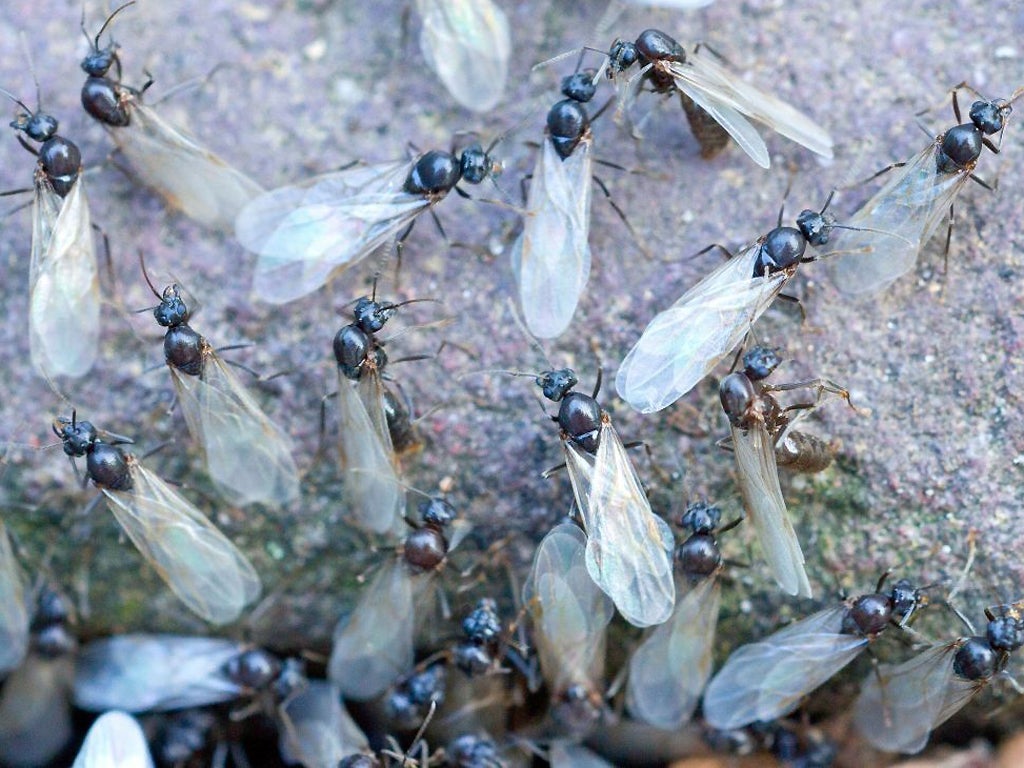Cleared for take-off: it's the day of the flying ants
Yearly mating ritual will see pavements and gardens covered with swarms of insects

Your support helps us to tell the story
From reproductive rights to climate change to Big Tech, The Independent is on the ground when the story is developing. Whether it's investigating the financials of Elon Musk's pro-Trump PAC or producing our latest documentary, 'The A Word', which shines a light on the American women fighting for reproductive rights, we know how important it is to parse out the facts from the messaging.
At such a critical moment in US history, we need reporters on the ground. Your donation allows us to keep sending journalists to speak to both sides of the story.
The Independent is trusted by Americans across the entire political spectrum. And unlike many other quality news outlets, we choose not to lock Americans out of our reporting and analysis with paywalls. We believe quality journalism should be available to everyone, paid for by those who can afford it.
Your support makes all the difference.One of the British summer's greatest spectacles is upon us – flying ant day. Enormous numbers of flying ants are expected to take advantage of the hot weather today or tomorrow to perform their yearly mating ritual, or "nuptial flight".
In some places, the flying has already begun. In the aftermath, they will cover pavements and gardens, land on cars and passers-by, and attract swarms of seagulls eager for a free feast.
Although the ants we see scurrying along the ground during the year are sterile female worker ants, those seen airborne this week will be males and new queens, mainly of the common black garden ant, Lasius niger.
Thousands of colonies synchronise their emergence, to make things more difficult for predators and to increase the chances of obtaining a mate from a different colony, to prevent inbreeding. Northern Britain may follow slightly behind the South.
After mating, the males waste away and die, but the queens, after shedding their wings, found new colonies, digging a chamber underground for the nest, and will lay eggs for the rest of their lives – which can be 15 years.
This year the Society of Biology is running a survey to learn more about the spectacle of flying ant day, relying on lots of people reporting their sightings. "Through our survey we hope to learn more about how the weather affects the time of emergence," says Dr Mark Downs, the Society's chief executive. "Both the weather on the day the ants emerge and the weather in the run-up to their emergence can be important.
"We also hope to learn how synchronised the emergence of flying ants is across the UK: is flying ant day the same everywhere? It is important that the flights are synchronised between nests, because the flying ants won't survive very long and need to maximise the chances of meeting ants from other colonies to mate with."
The Society of Biology is asking everyone who sees flying ants in 2012 to make a note of the time, date, location and weather conditions, and submit records through an online survey.
Although some people consider flying ants a pest, there is no need to kill them, as the males die of their own accord and thus represent a very short-lived problem, not least as the swarm takes place only once a year.
Dr Adam Hart, an ecologist and insect expert at the University of Gloucestershire, is working with the Society of Biology on the survey. He says: "After such a wet summer it's wonderful to see all these flying ant reports coming in, interestingly at a very similar time to last year."
Join our commenting forum
Join thought-provoking conversations, follow other Independent readers and see their replies
Comments